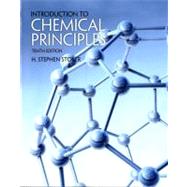This solid, yet value-priced paperback gives you the background and confidence you'll need to succeed in chemistry. Stoker focuses on the most important topics—omitting organic and biochemistry chapters—and teaches the problem-solving skills students in this course need. Each topic is developed at “ground level,” and continues step by step until the level of sophistication required for a further chemistry course is attained.
This interesting and informative book gives readers the background (and confidence) needed for subsequent success in general chemistry. Honing selected portions for greater clarity in presentation, Stoker's book foregoes the multi-topic, “watered down” version of its counterparts by zeroing in on a smaller number of select topics, treating them extensively, and helping readers gain a solid grasp of essential, fundamental material. Develops each topic at “ground level” and continues step-by-step until the level of sophistication required for further chemistry study is attained.
Topics place an emphasis on problem-solving throughout—uses dimensional analysis in problem-solving whenever possible. Features 17 vignettes on “The Human Side of Chemistry”—Brief biographies of scientists who helped develop the foundations of modern chemistry. For those who have had little or no previous instruction in chemistry, or for those who want a thorough review of chemical principles.








